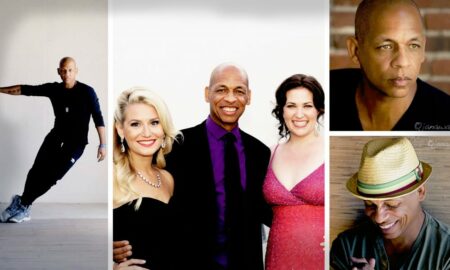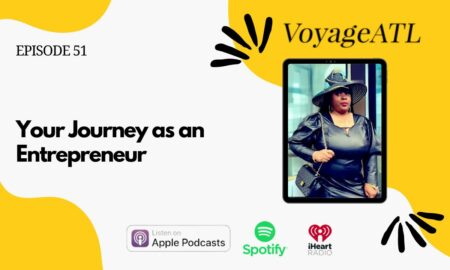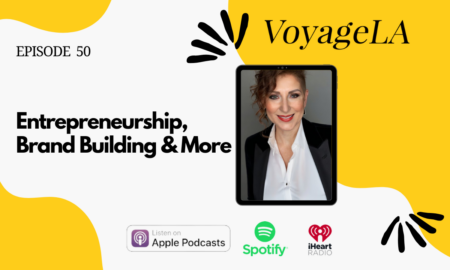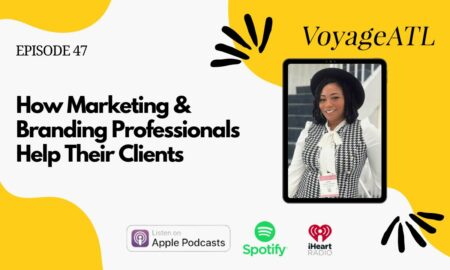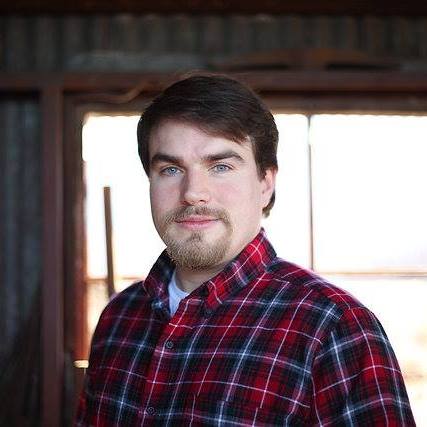

Today we’d like to introduce you to Kenneth Spivey.
Kenneth, can you briefly walk us through your story – how you started and how you got to where you are today.
When I was young, everyone who knew me said, I was creative and a mechanically gifted child. I also loved movies and was fascinated by the creativity of props. Movies I grew up with such as Hook, Ghostbusters, Back to the Future, Goonies are just a few, but these would have a profound effect on my life. At the age of three, I was crafting 3-D objects and costumes out of cardboard, paper and scotch tape; all of these were based on the Disney movies I was exposed to at that age. I was doing “cosplay” before I even knew what it was! As I grew older, the paper soon turned to aluminum foil, to better replicate the metal props I saw in the movies. After begging my dad for a power tool, at the age of five, I got my first real power tool for Christmas (an electric scroll saw). I was soon using this tool to create things out of wood. Video games would also have a profound effect on my imagination as well. Using what I had… and found, I would construct things that caught my imagination. In school I would find paper clips and staples, then twist and bend the wires to make gears and springs; I would then assemble little mechanical automata. This was not something that was taught but came intuitively. It was learned little by little, trial and error.
Over the years, these constructions became a work of passion but to grow beyond what I knew, I had to learn how to use the machinery associated with “true” metal work in order to supersede my intuitive skills and to fulfill my goals. When I started high school, an art teacher steered me toward a youth apprentice program in Birmingham, Al at the historic Sloss Furnace. It was through this program and the various classes, that I learned the basics of welding, forging and casting metals. I thought to myself, “finally… I can stop pretending and make real swords, knives and anything else”. So, I started crafting and forging a blade and upon its completion a realization hit me; first, I needed practice, the other more profound realization was that the craft of making a sword was not an independent process.
The job of the blacksmith ended when the blade was complete. However, it takes a knowledgeable woodworker to make the handle, an engraver to carve designs and inlay, a jeweler to cast elaborate hilts of precious metals, a leather smith to make sheaths, a lapidarist to grade, cut, and set the stones and many more fines crafts as the pieces and independent processes become refined and exceedingly elaborate. So, I did the only reasonable thing, I sought to master as many crafts as I possibly could and started up my own business and foundry in Wilsonville, AL.
At that time, my business was known as KRS3-Designs. I quickly started experimenting and honing my skills. I had heard of someone creating knives out of railroad spikes and decided that it would be a good idea to do that to get experience, while also selling them at art shows to get exposure. The first knife I made was what you would expect, horrible! I took each knife I made and looked for the biggest flaw, then in the next knife would aim to rectify the issue. 500 knives later, I am nationally known for my knives and polished finish. I would not consider my self, famous- far from it, but I did master the skills and I learned that repetition and failure was the best teacher.
Many would consider me as a blacksmith because I focus on metals but I prefer the term “Smith” because of my broad range. I am most knowledgeable in medieval crafts. Metalsmithing, stained glass, fine jewelry, woodworking, leather craft and mechanics are among some of strongest skills. (The word “smith” is derived from the word “smite” which means to hit with a blunt object.)
When looking into a career, I did not know how these old world crafts could be used in a way that could be lucrative and provide job security. The idea of a prop maker was always there, but that dream seemed like an unrealistic one, like a child who wants to become an astronaut, (you’re not going to even be considered unless your the best of the best or know someone in the industry). Therefore, I went into education. I was interested in the teaching aspect, so I figured why not teach what has taken my whole life up to this point, to accomplish.
I graduated from the University of Montevallo with a degree in Art and a master’s in Art Education. Dr. Ted Metz at The University of Montevallo was pivotal in my continued education/love of working with metal. While applying for teaching positions, I quickly discovered that there were few schools (high schools and junior colleges only) that supported the programs to facilitate the type of “art” that I wanted to teach. So, I went to my professors and asked for help. They recommended that I go to SCAD (Savannah College of Art and Design) in Atlanta to get my MFA, which would, in turn, would allow me to teach at a collegiate level. SCAD had the equipment and facilities I required to expand my knowledge and skills. While in Atlanta at SCAD, I had the good fortune to work on various TV and movie sets. One conceptual piece of my art was used in an opening segment of “The Vampire Diaries”. I also worked under the tutelage of Bruce Larsen, a celebrated prop master, on the set of USS Indianapolis: Men of Courage with Nicholas Cage. Talk about great experiences! I graduated with honors, hosting a thesis at Rhodes Hall in midtown Atlanta.
After struggling to find a college with a curriculum that supported the lost arts, I went into independent teaching to gain the experience required to teach. I then moved my business operations to “Artist on the Bluff” and reformed KRS3-Designs into “Fire and Brimstone Forge”, which then offered insight into my production, through classes taught on a higher level. Fire and Brimstone Forge offered commission work and sold wares that were handcrafted utilizing the various crafts I had mastered. I figured, since I did not have contacts in the movie industry, my best bet would be to make a name for myself and continue to do something unique that would capture the interest of people.
After obtaining my MFA, my business began to gain momentum. I started to teach summer classes at SCAD and every cent I made was utilized to expand the classes and invest in tools for my own business and education. It was not long after that, I joined the crew at MASS Collective in Atlanta and started to teach since more of my business was coming from that direction. I was doing all right, but my parents were concerned for long-term success banking on a more secure job. Don’t get me wrong, my parents have always supported me and I was very grateful, however, I was reluctant to give up on turning a hobby into a career. My father was more grounded, he was constantly pushing me to get a “real job” claiming that my dream job would not come calling or knocking on my door… but it did. My professors at SCAD introduced me to one of the prop masters working on the Marvel films. It was not long after, that I received a call and I was soon constructing and working on iconic props for the film industry. To this day, I still run my personal business and teach classes through Mass Collective in downtown Atlanta.
I teach loosely, not holding too tightly, to a certain method nor tradition because everyone learns differently. What might work for one student, might not be as effective for everyone else so rather than stick to a certain way, I encourage individuals to experiment and find a way that best works for them, but also one that is effective.
Each class is designed with a tangible project to complete by the end of the class time, so as to which students will be able to take home with them. The various lessons are broken down into beginner, intermediate and advanced courses. They are also designed so that prerequisite courses are not necessarily required, although it is strongly suggested to take them in order to prevent any learning curves.
Before I was a prop maker and I was making my own replicas, I was not only interested in the aesthetic and materials alluded to in a prop of interest, I was also fascinated with the function, and if possible, create my replicas to not only look the part, but function as it is on screen. In the movie world, props only have to look like they work. If they need a function then in post-production everything is digitally manipulated to have it do something it otherwise could not do because of impracticality or it would take too much time or otherwise be exceedingly expensive. I look at this as a challenge, if mechanically possible I try to make my props look, function and crafted exactly as they are on screen and if they are made of fantasy materials I try my best to find the closest contender.
Great, so let’s dig a little deeper into the story – has it been an easy path overall and if not, what were the challenges you’ve had to overcome?
It has never been a smooth road, as a craftsman, artist, or professional prop maker I am on the forefront of things that have never been done or accomplished because in many cases they don’t exist until I make them! In fact, many of the tools and hardware I require doesn’t exist, so I have to first create the tool to make the hardware that constructs the piece. A perfect example of this would be many of space and fantasy pieces I create. I cannot make them out of recognizable materials or hardware. Props made to fit other planets or fantasy worlds are not going to have American hardware. It all has to be fabricated from scratch or altered in a way, that is not recognizable so that it fits within the world or universe that the prop resides in. Many people might say it’s easy to create replicas of props and I say, sure it’s easy to create a facsimile of something because it has already been done.
However, when you try to make something that does not exist or can’t be crafted by using common means of assembly because it has a certain look that must be adhered to due to its concept of “special” attributes its difficult and takes a lot of ingenuity to find a way to accomplish in a way that does not visually violate the nature of the piece within this fantasy world but is practical to fabricate within the real world. This is made so much harder when you are locked in a way something is supposed to look or how its to function.
Fire & Brimstone Forge – what should we know? What do you guys do best? What sets you apart from the competition?
My company was started shortly after working at Sloss Furnace as a youth apprentice. I had a natural talent and loved blacksmithing and metal work enough that I wanted to go independent and create my own things. As an apprentice, I was tasked with certain things I could make or couldn’t make so it was the most obvious choice for me. Utilizing my grandfather’s and father’s hanger they used for working on airplanes, I started my foundry at the age of 15. My parents, wanting to support me in the arts as they did with my brother in sports, got me my first forge and set up space for me to work. The first thing that was clear to me was that I had to get good, really good, and very fast. I started making railroad spike knives, making them over and over to improve my skills. I soon joined local art shows, selling my knives to funnel money back into the business, but more importantly, to create a name for myself. The successes came from failure.
The first few knives I made were not all impressive. I would pick the worst feature and on the next knife, I would work to fix the issue. The knives got to a point that they were nice enough to sell. Since they were all handcrafted, each one was different, therefore it never felt repetitive and the construction became second nature. Now, 500 + knives and I’m nationally known for my knives and polish. When I graduated from college, I reformed my business to include teaching the crafts that took me years to perfect. My company specializes in movie props, sculpture, and medieval crafts. I specialize in: blacksmithing/metalsmithing, stained glass, armor, fine jewelry, sculpture, hand engraving/inlay, leather work, metal casting, locksmithing, whitesmithing, repousse’/chasing, welding, lapidary, woodworking and stone carving. I am possibly best known for my blacksmithing metal work, the brilliant polishes I coax from the metal and my mechanical/kinetic work.
I am possibly most proud of how far I have come. I reached a place I thought would take me a lifetime of work to achieve. I make pieces that challenge what I know and what I am capable of creating. I make these not knowing whether or not they will work, only to be validated when they do… then, it is something special! I have invented mechanical movements, created a new type of clock and have worked on some of the most iconic props in recent movies. The thing that sets me apart from others is my versatility. Many masters of craft typically have a single skill they stick to and are really diverse within that set skill. I am unique in that I am skilled in many crafts and skills that I then can use intermittently with other crafts. In essence, I am an individual who can create something that would otherwise take many craftsmen to create. As such there are very few people in the world that can do what I can do.
What moment in your career do you look back most fondly on?
The greatest moment of my career has been watching my students grow and exceed their expectations. There is no finer moment as an instructor to pass on your knowledge to others, knowing that what you have taught them will be utilized for generations to come.
Contact Info:
- Address: 2505 plantation point lane
Vestavia Hills, AL 35226 - Website: http://www.fireandbrimstoneforge.net
- Other: http://masscollective.org












Image Credit:
Kenneth R Spivey of Fire and Brimstone Forge, Dawn Harrison from the Hoover Magazine
Getting in touch: VoyageATL is built on recommendations from the community; it’s how we uncover hidden gems, so if you know someone who deserves recognition please let us know here.



